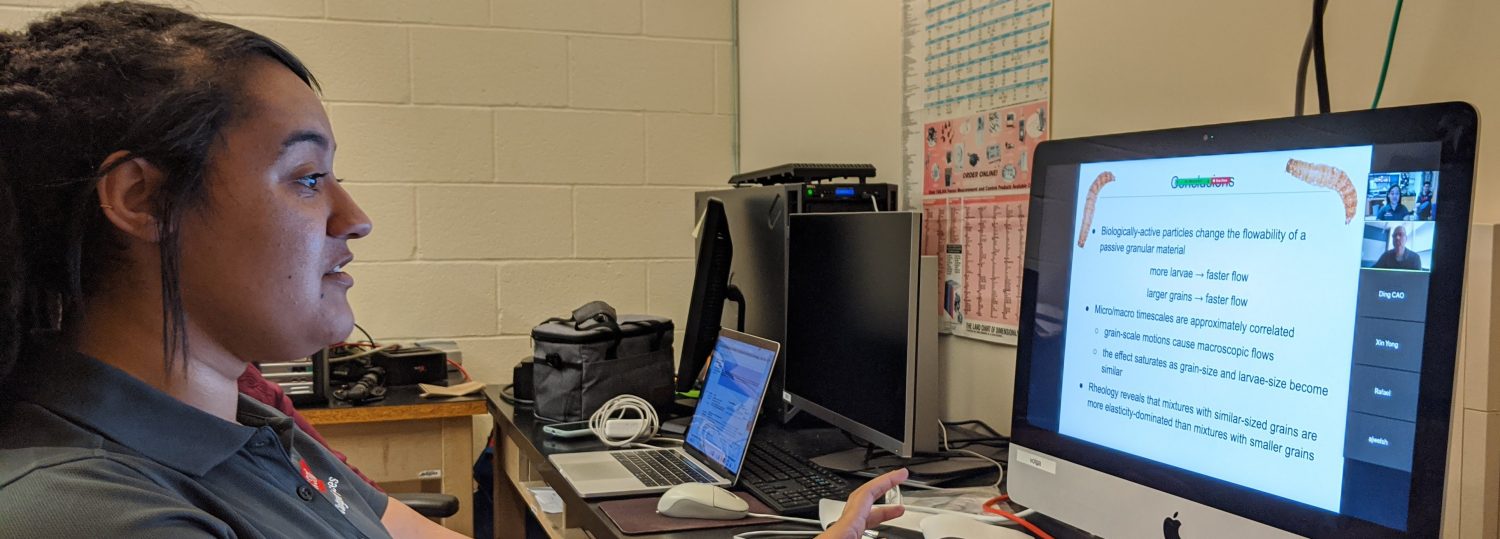Late on February 29 2020, as travel to the APS March Meeting in Denver was already underway, the American Physical Society leadership made a smart (if last-minute) decision to cancel the meeting. Spurred by Twitter conversations, #DSOFTvirtual sprang into existence and by the next morning our community was self-organizing sessions to occur throughout the week. The legacy of these sessions is available here (now view-only, but these were both being crowd-sourced in real time all week!):
- Spreadsheet of #DSOFTvirtual sessions: some of these were attended by over 100 participants!
- Our Guidelines for hosting sessions, which could serve as a starting point for anybody planning to run virtual conference sessions
The remarkable part of the experience was how quickly our community rallied to make our small piece of the meeting happen. Without Twitter and Facebook, this would not have been possible since these provided both a rapid-response and a nucleation of activities. As we encountered technical difficulties (a limited of number of simultaneous Google Sheets editors, a need for better communication and guidelines), numerous people volunteered to solve problems and implement them.
The feedback we received was that the Pro/Enterprise versions of both Zoom and BlueJeans worked admirably; other platforms less well. Two key items were found to be lacking: without travel to an offsite location it was tough for speakers/participants to have a cleared schedule, and the lack of hallways to hang out and chat. Some side-channel conversations occurred within the “Chat” features of the videoconferencing software, and these sometimes lead to people scheduling a later videoconference to have a real conversation. In a few cases, a small group of people were able to stick around after the talk and continue conversations within the main room. With advance planning, each speaker could create and share a place to virtually-gather after the talk, and invite people to attend that. A few key benefits were also noted in the feedback we received: some scientists were able to participate remotely who could not have afforded the time/cost to attend in person, and the slides were more visible.
We’ll likely all be participating in virtual conferences over the next year, as has been mentioned in some of the coverage the #DSOFTvirtual and other efforts have received in the press:
- Nadia Drake, “How the Coronavirus Is Hampering Science” Scientific American
- Christine Middleton, “APS March Meeting takes to the internet” Physics Today
- Jessica Thomas, “Canceled Meeting Makes a Virtual Rebound” Physics
- Giuliana Viglione, “A year without conferences? How the coronavirus pandemic could change research” Nature
- Zoe Budrikis, “Physics in a time of COVID-19” Nature Physics
What comes across in all of these articles is that there are so many reasons why we should be considering virtual meetings: combating climate change, uncrossable national boundaries (whether due to quarantines or travel bans), child and elderly care responsibilities, increasing rates of visa rejection, disabilities that make participation challenging, and prohibitive costs to early career researchers and researchers from countries without large research budgets. In many cases, the folks advocating for each of these issues have previously found it difficult to get traction for their concerns. This may be the year we finally listen to them, and make conferences more accessible to all.
FAQ
Have a question you’d like answered? Feel free to email me, and I’ll use your questions to add more to this section.
- Will the participants be able to figure out the basic etiquette of videoconferencing? Who are we kidding: as of mid-March everybody should know the basic rules! Nonetheless, publicizing a local set of guidelines would still be helpful. For instance, does the host want people to use the raise-hand button or the chat window for asking questions at the end of the talk? Who will take care of timekeeping, and how?
- Do you want to record live sessions for asynchronous participation? Being recorded may make some speakers reluctant to participate, either out of shyness or because they are presenting unpublished data. However, recording talks also has several key benefits including building a larger audience (particularly via participation from other timezones and those who can’t take time away from work/family responsibilities), along with the ability to readily provide closed-captioning. If you are recording talks, you will need to locate/set up a website capable of hosting the video files for download or streaming. This could either be time-limited or in perpetuity.
- Will the talks be accessible to those who are visually impaired or hard of hearing? There are both challenges and benefits to the online format in providing improved access. Recorded talks (see previous question) typically provide a means to create captions/transcripts of the spoken text, and some videoconferencing software does also allow for live captioning even if the talk is not being recorded. Having a close-up view of the slides can help those with limited eyesight, and full-face video of the speaker benefits those who can read lips.
